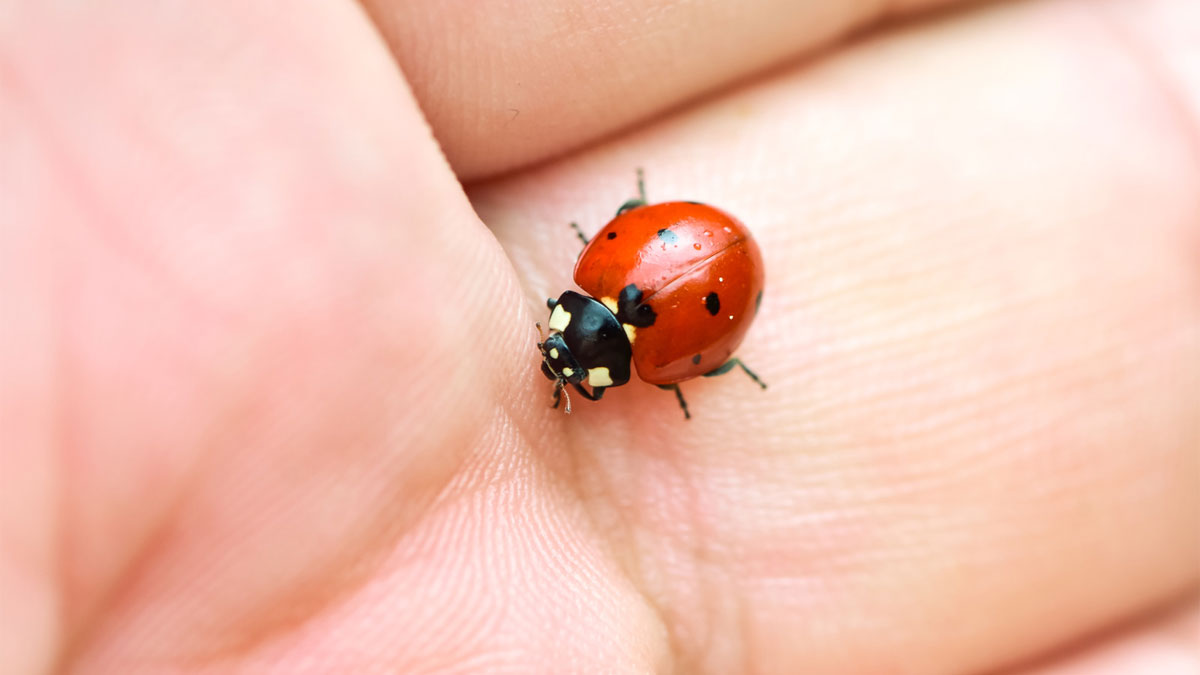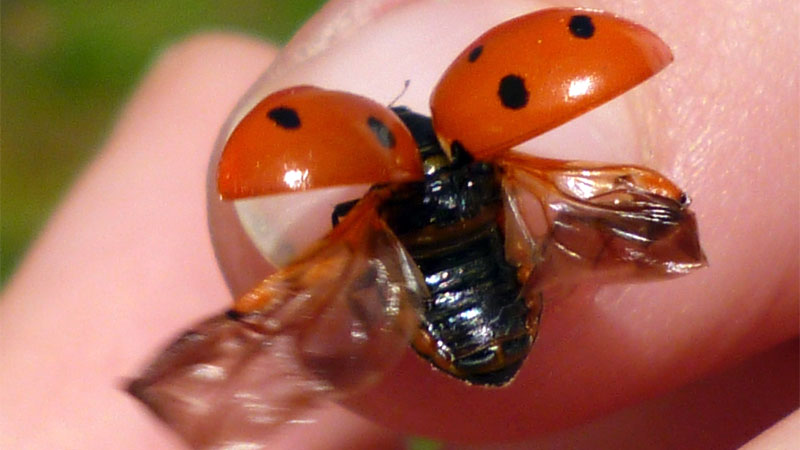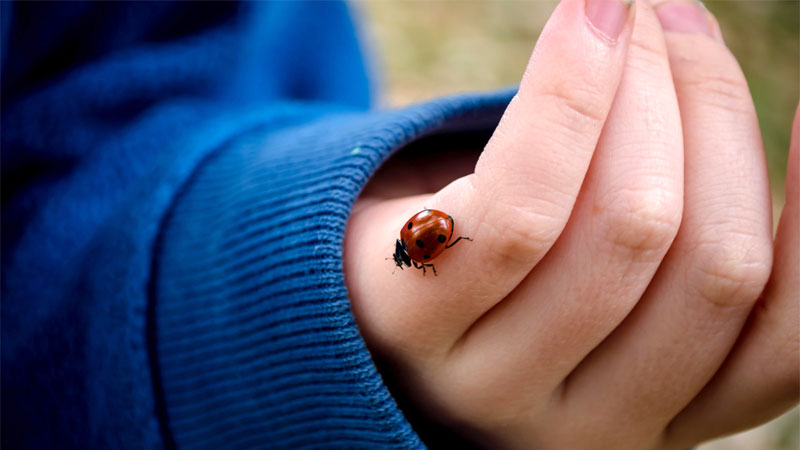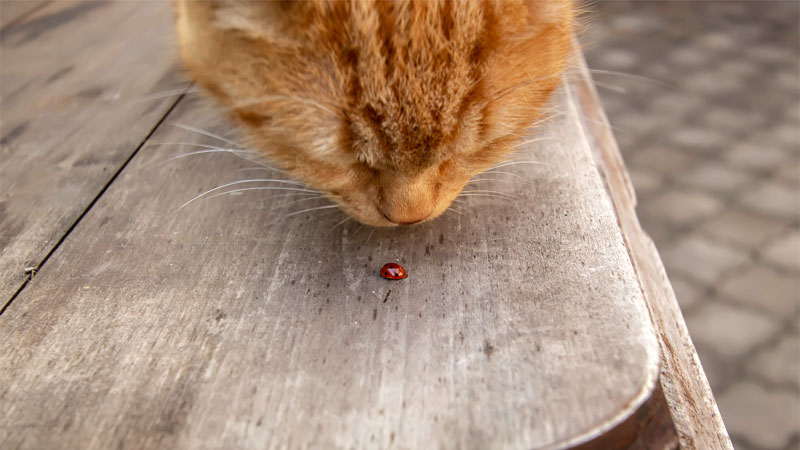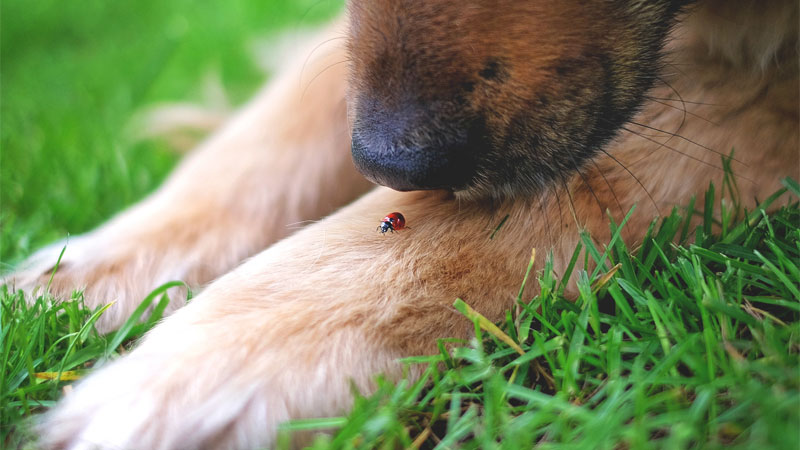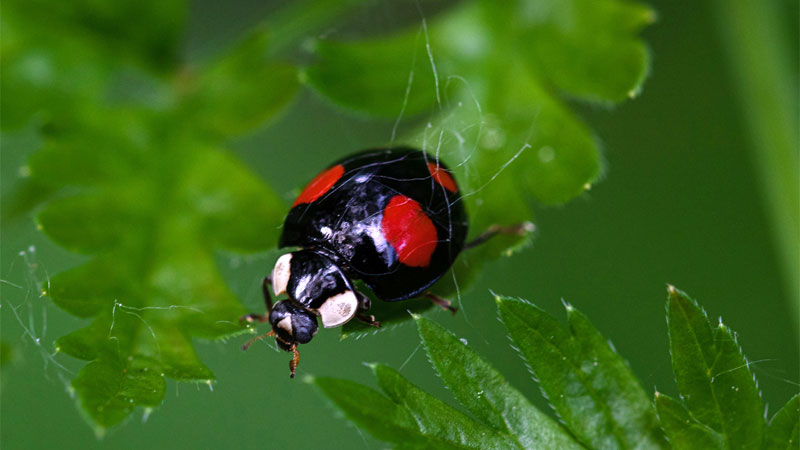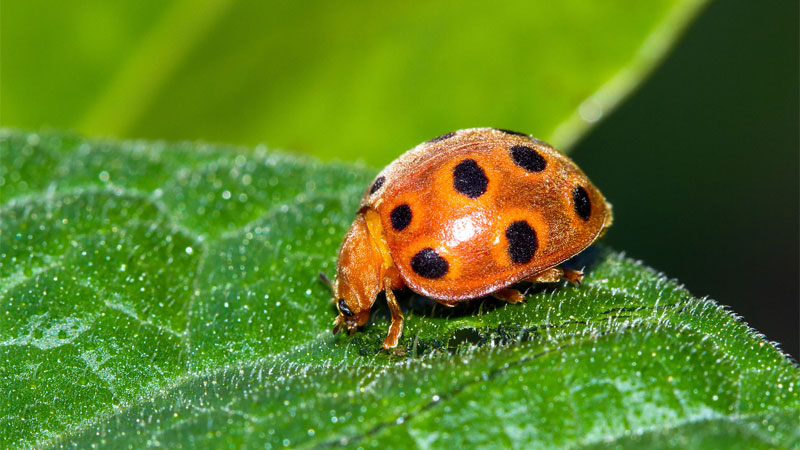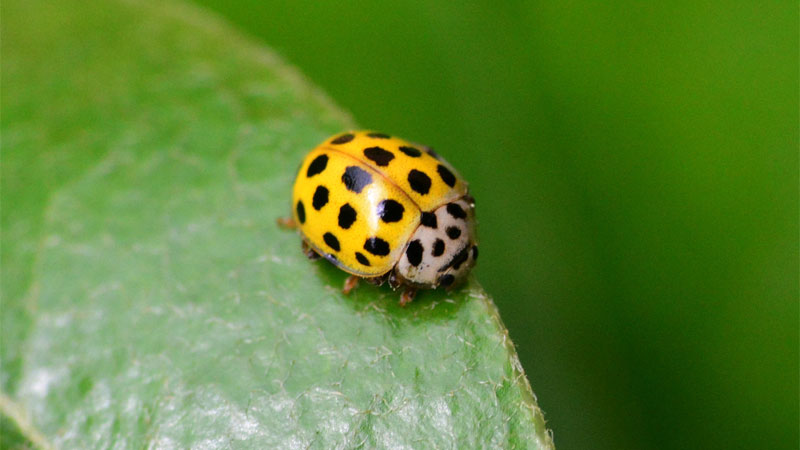We all know and love them, yet despite every child knowing what a ladybug looks like, most of us don’t know anything else about them. In some rare cases, ladybugs can cause an indoor infestation, but most of the time, they just hang around the garden looking pretty. But this does raise some important questions.
Ladybugs (often called ladybirds or lady beetles) aren’t true bugs as in they don’t come from the order Hemiptera. Instead, they come from the family Coleotera, which contains a staggering 25 percent of all known animals.
There are actually 6,000 species of ladybug, all belonging to the Coccinellidae family. This means that ladybugs aren’t always little black and red beetles and some are actually pests.
That said, ladybugs are pretty common in the garden, and while they seem harmless enough, you might be wondering if they actually pose a health risk to your kids or pets. So let’s spend a moment to look further at whether or not ladybugs are dangerous and what their actual purpose is in the garden.
Are Ladybugs Poisonous?
You’ve held them, let your kids hold them, and yet this question seems like an afterthought. In fact, ladybugs are so cute, they tend to disarm even the most cautious of parents. But they have those markings for a reason, so let’s start there.
The Meaning of the Markings
While not all ladybugs wear red and black, they do often have some pretty brightly colored outer wing covers. Red, yellow, and orange are all common colors, frequently with spots or stripes, although some species are brown or block for their base color. These markings are a form of signaling known as aposematism.
Aposematism is the evolution of bright colors to tell potential predators that you taste bad or may be poisonous. Humans in many cultures have used this knowledge to their advantage, such as some tribes notoriously searching for poisonous tree frogs and using their venom to tip hunting arrows. It’s also one of the ways survivalists discern if a potential food source is safe to eat.
And this is where logic and emotions get their wires crossed. Ladybugs have those bright colors because they CAN be poisonous, but we never pay attention to any potential risks because they’re just so darned cute! But before you get into a panic, let’s look at just how dangerous they might be.
Are All Ladybugs Poisonous?
Not all ladybugs are poisonous, and it’s important to denote what “poisonous” actually means. There are three categories of lethal substances in science, poison, toxin, and venom. Knowing the difference and using these words properly can literally save your life.
Poisonous
A poison is something you consume or absorb. For example, touching the secretions of certain poisonous frogs will allow it to absorb into your skin and harm you.
Oxford describes poisonous as:
Thus, if you bite into something and it has chemicals that make you sick, it’s poisonous.
Venomous
While venom is very similar in effects to poisons, the delivery system involved is completely different. A simple way people differentiate the two is the saying “If you bite it, it’s poisonous, but if it bites you, it’s venomous”.
Returning to Oxford, we get the following official definition of venomous:
Toxic
So what about toxic? This is a lot harder to define and, in fact, there’s no precise definition for it. However, it can still be differentiated from venoms and poisons.
Heading back to Old Reliable yet again, Oxford tells us toxic is:
As confusing as that sounds, the keyword is “elaborated”. In other words, a toxin is a sub-group of poisons that are artificially manufactured or modified. A good example of this is calcium oxalate, a toxic substance found in many of the foods we eat that’s created by plants as they’re processing nutrients.
So what does this all mean, you might be asking. Well, it means that being bitten by a ladybug won’t harm you. Also, ladybugs don’t give off poisonous secretions. However, they are considered poisonous if you eat one.
Are Ladybugs Poisonous to Humans?
Thanks to their tiny size and relatively mild demeanor, ladybugs pose next to no risk to people whatsoever.
It’s extremely rare for a ladybug to bite, hence the myth that only the more aggressive Asian lady beetle (Harmonia axyridis) will bite, and the poisons in their bodies are too weak to hurt children or adults. If you accidentally eat one, you’ll experience a pretty foul taste, but no other symptoms.
However, you should still be careful about letting ladybugs around infants, as the experience of accidentally (or intentionally) swallowing one may be traumatizing. Also, some people have allergies or sensitivity to ladybugs, which can result in additional discomfort or symptoms if they accidentally eat or are bitten by a ladybug.
But what about pets?
Are Ladybugs Poisonous to Cats?
No, they are not. But let’s say your cat eats a ladybug. One ladybug will give them a nasty taste in their mouth, but thankfully won’t give them the same horrible breath as when they eat a stinkbug. Once they’ve experienced eating a ladybug, most cats will choose not to do so again. However, there are a few things to look out for.
If you end up with an indoor infestation, your cat may decide to brave the taste in order to protect your home. This could result in eating multiple ladybugs, which will result in some side effects. The two most common side effects are mouth ulcers and indigestion or similar GI problems.
However, if this infestation happens to be Asian lady beetles or a similarly more aggressive species, the symptoms may be more pronounced. Additionally, Asian lady beetles have been known to bite the palate and hold on, causing your cat discomfort and requiring a vet to remove the bug.
Are Ladybugs Poisonous to Dogs?
No, ladybugs are not poisonous to dogs but they can be harmful. Your pup will likely be more sensitive to the natural defenses of ladybugs. Eating one won’t poison him, but the chemical released by chewing on one will result in minor chemical burns and other symptoms. While not life-threatening, these symptoms may require some intervention. Symptoms include:
- Changes in mood or behavior
- Drowsiness
- Excessive drooling (may not be as obvious in some species)
- Impaction (difficulty or inability to poop due to the inability to digest the shells)
- vomiting
When in doubt, don’t be afraid to call your veterinarian, who may suggest something over the counter to ease the symptoms.
Which Color of Ladybugs Are Poisonous?
This is something of a loaded question, because some species (such as the oft-mentioned Asian lady beetle) are known to have multiple possible colors and markings. That said, there are some basic guidelines of which colors you should be more cautious about.
Black
There are a lot of ladybugs that can be black, including the Asian lady beetle. However, the one to really watch out for is the pine lady beetle (Exochomus quadripustulatus), a species with an all-black body.
They do feature spots on their shells, which are often reddish-brown, but may also be orange or yellow, depending on their age and other factors. This species is one of the more poisonous ones, so do your best to keep pets away from them.
Brown
Brown is generally the least poisonous, although (once again) color variations may mean a more poisonous species appears brown. A great example of a brown ladybug is the larch ladybird (Aphidecta obliterata), which can be various shades of brown and may have stripes or instinct splotches.
Orange
This is the most common color for Asian lady beetles and also tends to represent the most poisonous ladybugs. Consuming an orange ladybug will result in more severe symptoms in pets and more pronounced allergic reactions in humans.
Red
Red ladybugs may have the characteristic warning color (even in nature, red means “stop”), but they’re actually not as poisonous as orange ladybugs.
Of course, the most iconic ladybug of all, the seven-spotted ladybug (Coccinella septempunctata), is a red ladybug with seven black spots. It was introduced to the US in 1973 (after several failed attempts) to aid in pest control. It can be found on most continents.
Yellow
Despite being one of the brightest colors, yellow ladybugs are among the least poisonous. A perfect example is the 22-spot ladybird (Psyllobora vigintiduopunctata) from Europe which feeds on mildew.
- How to Get Rid of Hawks - March 8, 2024
- How to Get Rid of Pill Bugs (Rolly Pollies) - March 1, 2024
- How to Get Rid of Groundhogs (Woodchucks) - February 5, 2024

